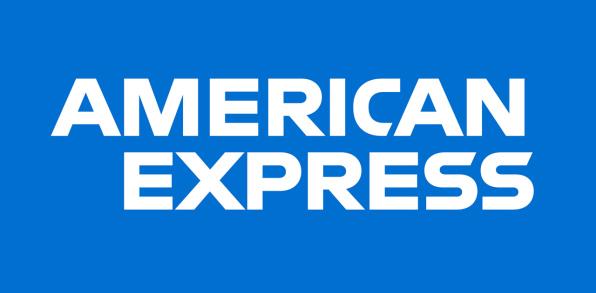Windows is one of the world’s most popular operating systems, yet it, like all software, is not flawless. Over time, users may face a variety of problems that may be annoying and unpleasant. Fortunately, many common Windows issues have easy remedies you can implement yourself without needing expert assistance.
In this guide, we’ll review some of the most common Windows issues and how to fix them effectively.
Slow performance
Slowness is the most noticeable and widespread problem with a system’s performance. It may be caused by many functional faults that work together to reduce overall efficiency.
Several reasons may lead to system tardiness. Hardware resources like low RAM or limited disk space can impede performance. Too many background processes consume memory, which lowers efficiency. Malware or viruses that go undetected can also lead to quite a slowdown.
Outdated or incompatible drivers may not work well with updated software, leading to inefficiencies. Problematic drive errors can further degrade system speed. Running applications that exceed system capabilities can strain resources. Lastly, inappropriate power settings may limit hardware performance, affecting overall responsiveness.
Windows is taking too much time going into Sleep Mode.
Typically, the sleep function puts the computer to sleep in three to five seconds; however, if it takes more than fifteen seconds, you are most likely utilizing the hybrid sleep feature. Before putting the computer to sleep, hybrid sleep transfers all of the RAM’s processes to the hard drive. Although it helps preserve your current session in the event of a power loss, it also makes it much longer for the computer to sleep.
If you find this function unsettling, you may return to the standard sleep mode. Expand the “Sleep” option, then expand “Allow hybrid sleep” from the same “Advanced Settings” on the “Power Options” page. Once you reach the drop-down option, choose “Off” to deactivate hybrid sleep.
Bugged or glitchy software
It is typical for applications, particularly older programs, to experience difficulties or even seem to start with Windows 10. One probable solution to this problem is to go through the app, right-click the app icon, and pick properties, then click on the compatibility tab.
From here, check the box next to “Run this program in compatibility mode for,” and then choose the version of Windows on which the software ran successfully.
Over the years, many app developers have updated their programs to fix issues and work with the current version of Windows. You can also assist by reporting any bugs you encounter.
Blue Screen of Death
The Blue Screen of Death (BSOD), a halt fault, is a frustrating but usually fixable computer problem. When the issue arises, your computer may freeze up and display a blue screen; you may also see a warning indicating a significant error or that your computer is rebooting. After that, you will need to restart.
Several solutions exist for resolving this issue. First, check the available space on your system disks. If it is limited, delete large files and applications that you do not need to free up space. Second, ensure that the software is up-to-date; problems might arise from using too old programs.
Update the device drivers as well, as Windows 10 conflicts with other programs. Verify that the software on the devices you connect to your computer, including the printer, scanner, camera, and monitor, is up to date by going to the device manager.
Windows audio problems
Audio issues are another common gripe among Windows users. Issues such as no sound, distorted audio, or unidentified gadgets may all impact productivity and entertainment. The first step is to ensure that the audio output device has been appropriately chosen in the system settings. Updating or uninstalling audio drivers using the Device Manager may often resolve sound-related difficulties.
The Audio Troubleshooter, accessible via Windows settings, may help automatically identify and fix common audio issues. If sound problems continue, you may want to examine the physical connections for external speakers or headphones or change the default audio format in the sound settings.
External device recognition failures
External hard drives, USB devices, and other accessories may not always appear when connected to a Windows PC. As a first step, make sure the item is plugged in correctly and try connecting it to a different USB port.
Use the Hardware & Devices Troubleshooter to find and repair typical connection issues. The most recent Windows updates are compatible with USB drivers updated using the Device Manager. If the problem persists, using the device on a different computer might help pinpoint whether Windows or the device is at fault.
Battery drain and power management
Windows 11 laptops tend to experience issues with power management and battery drain. If a device’s battery life appears to be depleting faster than usual, it is important to review the power settings and adjust them as needed. You can extend the life of your battery by enabling battery-saving mode in system settings.
Quitting power-hungry background apps and turning off unused launch programs is a good place to start. Charging and draining the battery to its maximum capacity, updating drivers, and periodic calibration can also improve its overall performance.
Unresponsive Windows file explorer
Windows File Explorer sometimes stops responding, crashes, or mishandles file displays. Restarting it using the Task Manager is an easy way to get it working again. If it continues to be a problem after that, you might try entering the system preferences and clearing out the File Explorer history.
Stability can be due to system file corruption deep within the system, which can be repaired using the SFC and DISM tools. The performance of File Explorer can also be improved by turning off unused startup programs and ensuring the computer is malware-free.
Final Thoughts
Windows problems can be frustrating, but most have simple fixes you can apply yourself. Following the steps above, you can resolve common issues and keep your system running smoothly.
Staying proactive by keeping your system updated, managing startup programs, and running occasional maintenance tools will help you avoid many common Windows headaches. If you have any specific Windows-related issues, feel free to leave a comment! Upgrading to Windows 11 is one of the best options to avoid these problems. Get it here at the Softvire Global Market today and check out our great deals.



